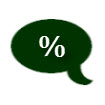 Shmuel Shayowitz (NMLS#19871) is President and Chief Lending Officer at Approved Funding, a privately held local mortgage banker and direct lender. Shmuel has over two decades of industry experience, including licenses and certifications as a certified mortgage underwriter, residential review appraiser, licensed real estate agent, and direct FHA specialized underwriter. Shmuel provides a uniquely holistic approach to comprehensive real estate and financial matters that goes well beyond any single transaction. Shmuel is an award-winning financier recognized for maximizing the short-term and long-term objectives of his client. As a contributing writer to many local and regional newspapers and publications, his insights have been featured in the media for many topics, including mortgages, personal finance, appraisals, and real estate trends.
Shmuel Shayowitz (NMLS#19871) is President and Chief Lending Officer at Approved Funding, a privately held local mortgage banker and direct lender. Shmuel has over two decades of industry experience, including licenses and certifications as a certified mortgage underwriter, residential review appraiser, licensed real estate agent, and direct FHA specialized underwriter. Shmuel provides a uniquely holistic approach to comprehensive real estate and financial matters that goes well beyond any single transaction. Shmuel is an award-winning financier recognized for maximizing the short-term and long-term objectives of his client. As a contributing writer to many local and regional newspapers and publications, his insights have been featured in the media for many topics, including mortgages, personal finance, appraisals, and real estate trends.

Indisputably the Coronavirus has impacted the lives of every single person throughout the world – medically, emotionally, financially or otherwise. Our hearts and prayers go out to everybody who has been impacted and affected. We pray for continued health and protection, with speedy salvation from The One Above for all those harmed by this pandemic.
That said, we are certainly living through unparalleled times. The Federal Reserve held an emergency meeting this past Sunday taking unprecedented steps to stabilize the banking sector. What was most remarkable about the announcement, was that there was a scheduled Fed meeting on Tuesday, but clearly, they felt they couldn’t afford to wait the 48hrs. They also wanted the element of surprise, coupled with the markets being closed – giving the markets time to digest and applaud the efforts.
Indeed, The Fed took massive action. Most people don’t understand the severity and magnitude of what was done, and why it was done. Think about what’s been happening to many people over the past few weeks. Before the quarantining and curfew demands, people were going to stores to get groceries and essentials, and they were met with long lines and half-empty shelves. That is precisely what has been happening in the banking industry.
Consumers and Businesses have been coming to banks and lending institutions for money, and the “shelves” are empty. Some banks actually did not have any money to lend, while others were ‘hoarding’ it for higher returns – thereby actually increasing their lending rates. You have all read and seen the articles and posts about mortgage companies being flooded with refinancing inquiries, but it extends well beyond even that. Between traditional Federal Reserve banking policies and the Dodd-Frank regulations imposed after the great recession from a decade ago, banks were constrained and had restrictions on the accessibility of even their own funds.
The Fed stepped in and did several things in an attempt to address the liquidity crises and the layers of obstruction. The first thing they did was cut the “Reserve Ratio” requirements to zero for thousands of banks. As mentioned, monetary and regulatory mandates forced banks to maintain a reserve ratio against their deposits, as well as collateral requirements for the severest of circumstances in the financial markets. By eliminating that threshold, banks had more freedom to move money. Granted, this comes with the risk of leaving banks exposed in the direst of circumstances that these policies were meant to protect against. An interesting turn of events indeed.
The next thing the Fed did was cut the “Discount Window” lending rate to 0.25%. In essence, the discount window is a mechanism that allows qualified institutions to borrow money from the central bank, to meet temporary shortages of liquidity. Mind you, during the crux of the 2008 crisis, Regulators forced banks to use the discount window, but as the situation worsened, the Fed was forced to create alternative solutions to prop up the financial system.
Furthermore, the Fed reintroduced another “tool” that was used during the previous crisis – that of Quantitative Easing whereby the Fed will be buying close to a Trillion dollars of bonds, including Treasuries and Mortgage-Backed Securities (“MBS”). They also committed to reinvesting any run-offs on loans being paid off that will be reallocated to this effort. This announcement had an immediate favorable impact to the mortgage markets, pushing rates lower, but the rally ultimately lost steam throughout the week. All of the gains were lost by the time of this writing. Unfortunately, again, mortgage rates crept higher on concerns that additional stimulus would be needed causing massive inflation and a weakening currency.
Finally, the Fed cut the “Fed Funds” rate to 0%. While I have written about this so many times, it never surprised me to learn that people confuse the Fed Funds Rate with Mortgage Rates. Simply put, the Fed Funds Rate is the interest rate at which banks borrow and lend reserve funds to one another on an overnight basis. Again, the indirect benefit of this is that the “Prime Rate” which is 3% higher than Fed Fund Rates will cause home equity lines of credit, some student loans, and some credit card loan rates – that are tied to Prime – to decline. It will certainly help many people carrying large balances, but it does not translate into a 3%, let alone, 0% mortgage rate.
For now, the best that someone can do is be in touch with a reputable and knowledgeable mortgage representative who can guide them to make the best decisions during these volatile times. Wishing everyone true peace, security and Godly protection during these challenging periods. We will get through this.
To learn more about Shmuel Shayowitz, click here or complete this form to be connected with Shmuel:


















